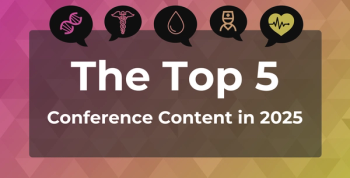
Top 5 Most-Viewed Diabetes Content of 2024
This year’s top diabetes content focused on pediatric metabolic health, misconceptions about weight loss drugs, and more.
The most-viewed diabetes stories of 2024 highlighted key advancements and challenges in diabetes care, from groundbreaking
Here are the 5 most-viewed diabetes pieces of 2024. You can check out the rest of our diabetes news
5. Dr Robert Lustig on Pediatric Metabolic Health: “Sugar Is the Alcohol of the Child”
At an
4. CCS Report Reveals Misconceptions Among People Living With Diabetes; Calls for Enhanced Engagement, Education
A survey of over 1500 individuals with diabetes uncovered significant misconceptions, including the belief among 57% of respondents that GLP-1 weight loss drugs alone can manage their health. Arti Masturzo, MD, MBA, chief medical officer of CCS, said these drugs should be part of a comprehensive care strategy involving personalized education, coaching, and medical device support. The survey also revealed gaps in patient engagement, with many seeking more support between doctor visits and better initial education at diagnosis.
3. Most Insured Adults Still Have to Pay at Least Part of the Cost of GLP-1 Drugs
A KFF Health Tracking Poll revealed that affordability remains a significant challenge for GLP-1 users, with over half of insured adults still paying out-of-pocket costs. The survey highlighted diverse uses for these drugs, with 39% using them for chronic conditions like diabetes or heart disease and 38% for weight loss. Public awareness of GLP-1s has surged, but barriers like high prices and limited Medicare coverage persist, particularly for weight loss purposes.
2. What Happens to Patients With Diabetes When Semaglutide Dosing Is Disrupted? Dr Ian Neeland Explains
In this interview from January, Ian Neeland, MD, University Hospitals Harrington Heart & Vascular Institute, discussed the risks for patients with diabetes who face semaglutide shortages; these include losing glycemic control, experiencing symptoms of uncontrolled diabetes, and facing adverse events. Neeland also emphasized the challenges of switching medications, as alternative options may lack the cardiovascular and kidney benefits of GLP-1 receptor agonists. Improper reintroduction of semaglutide at previously stable doses can also cause severe side effects, highlighting the need for patient education and careful management.
1. FDA Approves First Over-the-Counter Continuous Glucose Monitor
In March, the FDA approved the Dexcom Stelo Glucose Biosensor System, the first continuous glucose monitor (CGM) available over the counter. Designed for adults not requiring insulin therapy, the system helps track glucose levels through a smartphone app, with each wearable sensor lasting 15 days. This milestone expands access to CGMs, empowering individuals with or without diabetes to monitor their glucose levels without needing a prescription.
Newsletter
Stay ahead of policy, cost, and value—subscribe to AJMC for expert insights at the intersection of clinical care and health economics.








































